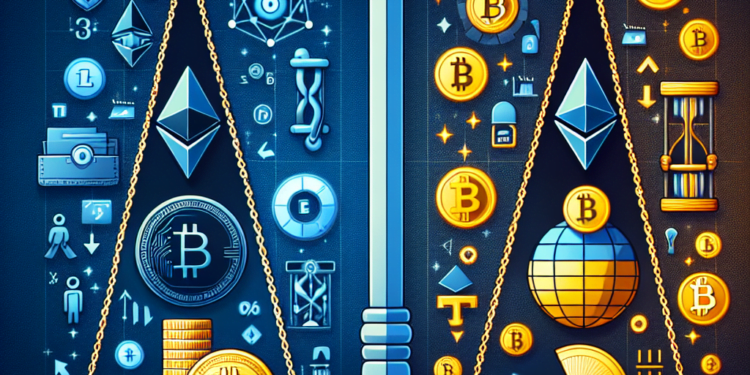Exploring the Pros and Cons of Decentralized Finance
Decentralized finance, popularly known as DeFi, has been on a whirlwind journey. This radical financial phenomenon is challenging norms and turning the traditional financial system on its head. As blockchain technology expands, it’s redefining how financial transactions are conducted and managed. But like everything else, it too comes with its own advantages and drawbacks.
Pros of Decentralized Finance
Greater Accessibility: One of the most praised aspects of DeFi is how it expands accessibility to financial systems globally. Traditional banks and other financial institutions often exclude huge populations due to lack of infrastructure, discriminatory regulations, and high operating costs. DeFi eliminates these barriers by enabling anyone with a smartphone and internet connection to participate.
Efficiency and Cost-effectiveness: DeFi is notoriously efficient. It cuts out middlemen from financial transactions which minimizes delays and reduces costs. It is especially beneficial for sectors like cross-border payments that are usually slow and expensive.
Transparency and Security: DeFi leverages blockchain technology that ensures transparency and security. Every transaction is recorded on the blockchain and can be verified by anyone participating in the network. At the same time, this information is cryptographically secured to prevent unauthorized access.
Financial Innovation: The decentralization of finance opens up possibilities for financial innovation. Concepts like yield farming, liquidity mining, flash loans are unique to DeFi and introduce different ways to earn returns and manage risks.
Cons of Decentralized Finance
Technological Complexity: While DeFi can make financial services available to a larger audience, the technological understanding required to use them can still be a hindrance. User interfaces are not always user-friendly, and the underlying code is complex, often leading to user error.
Smart Contract Vulnerabilities: DeFi relies on smart contracts, self-executing contracts with the terms of agreement directly written into the code. These contracts, while efficient, are vulnerable to coding errors and hacking, leading to potential loss of funds.
Lack of Regulation: DeFi currently operates in a regulatory grey area. This can lead to worrisome scenarios and exposes users to potential fraud and scams.
Market Volatility: DeFi operates with cryptocurrencies, which are notoriously volatile. Instability in prices could lead to significant losses for DeFi users.
Conclusion
DeFi is neither a panacea nor a ticking bomb. It embodies an emerging avenue that with refinement and regulation, could democratize access to financial services for the unbanked or underbanked, and revolutionize the world of finance. The potential downsides should, however, be addressed. Users are advised to tread with caution as the DeFi space matures and evolves.
If you’re interested in staying updated with the latest developments in DeFi, check out DeFi Daily News for trending news articles and more.
Frequently Asked Questions (FAQs)
1. What is DeFi?
DeFi, short for Decentralized Finance, is a blockchain-based form of finance that eliminates intermediaries from financial transactions, allowing individuals to control and manage their assets and investments.
2. What are some popular DeFi applications?
Popular DeFi applications include decentralized exchanges (DEX), lending and borrowing platforms, yield farming platforms, and platforms for derivatives trading and insurance.
3. Can anyone access DeFi platforms?
Yes, anyone with an internet connection and a cryptographic wallet can perform transactions on a DeFi platform, regardless of their location.
4. What are the risks involved in using DeFi?
The risks include technological complexities that can lead to user errors, smart contract vulnerabilities, lack of regulation, and market volatility due to reliance on cryptocurrencies.



















